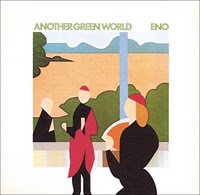 Another Green World is a mix between the instrumental ambient music Eno was making at the time, and the relatively more structured pop/rock songs he had released on albums like Here Come the Warm Jets. Somehow, the combination works even better than either of individual elements does on their own, as this is his best album. More than anything, Another Green World is about atmosphere. In that regard, it’s dreamy soundscapes remind me of Miles’ In a Silent Way. –Lucas
Another Green World is a mix between the instrumental ambient music Eno was making at the time, and the relatively more structured pop/rock songs he had released on albums like Here Come the Warm Jets. Somehow, the combination works even better than either of individual elements does on their own, as this is his best album. More than anything, Another Green World is about atmosphere. In that regard, it’s dreamy soundscapes remind me of Miles’ In a Silent Way. –Lucas
Album Reviews
Cheap Trick “At Budokan” (1979)
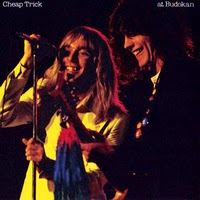 At Budokan brought Cheap Trick to the masses with a vibrant live set that captured the band in front of an adoring Japanese audience. Entirely overlooked on the original, the band’s debut is represented by “ELO Kiddies” and “Speak Now or Forever Hold Your Peace,” while essential In Color Tricksters “Downed” and “Southern Girls” are cranked to arena-rockin’ levels in the same way the live “I Want You to Want Me” blew the lid off the studio version to achieve hit status. Elsewhere, “Auf Wiedersehen” and “High Roller” are featured from Heaven Tonight, as is the slow burning non-LP ballad “Can’t Hold On.” While the original At Budokan is a potent single album’s worth of smoldering melodic rock fire, 1998’s expanded “At Budokan: The Complete Concert” proves you can’t get too much of a good thing. –Ben
At Budokan brought Cheap Trick to the masses with a vibrant live set that captured the band in front of an adoring Japanese audience. Entirely overlooked on the original, the band’s debut is represented by “ELO Kiddies” and “Speak Now or Forever Hold Your Peace,” while essential In Color Tricksters “Downed” and “Southern Girls” are cranked to arena-rockin’ levels in the same way the live “I Want You to Want Me” blew the lid off the studio version to achieve hit status. Elsewhere, “Auf Wiedersehen” and “High Roller” are featured from Heaven Tonight, as is the slow burning non-LP ballad “Can’t Hold On.” While the original At Budokan is a potent single album’s worth of smoldering melodic rock fire, 1998’s expanded “At Budokan: The Complete Concert” proves you can’t get too much of a good thing. –Ben
Miles Davis “Nefertiti” (1968)
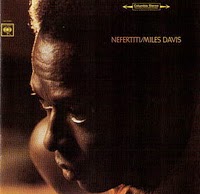 I wish I’d been a fly on the wall, no, a fly on producer Teo Macero’s shoulder during the classic sessions which yielded this album and the rest of the quintet’s catalogue in the late 60s. Creative tension probably doesn’t even begin to describe the atmosphere. Strangely, there are no Davis compositions here, but Wayne Shorter weighs in with the first two tracks – the slightly off key, circular title track and beautiful Hand Jive. On the latter, the sax is a true wonder in his hands, soulful, searching, graceful. I much prefer the version of Herbie Hancock’s Riot heard here, rather than on his own album Speak Like A Child. It’s slightly faster, with an almost mambo, Latin sounding tempo. –Neal
I wish I’d been a fly on the wall, no, a fly on producer Teo Macero’s shoulder during the classic sessions which yielded this album and the rest of the quintet’s catalogue in the late 60s. Creative tension probably doesn’t even begin to describe the atmosphere. Strangely, there are no Davis compositions here, but Wayne Shorter weighs in with the first two tracks – the slightly off key, circular title track and beautiful Hand Jive. On the latter, the sax is a true wonder in his hands, soulful, searching, graceful. I much prefer the version of Herbie Hancock’s Riot heard here, rather than on his own album Speak Like A Child. It’s slightly faster, with an almost mambo, Latin sounding tempo. –Neal
Talk Talk “Laughing Stock” (1991)
 They started [in 1982] with “The Party’s Over” – that’s precisely how ten years later, Talk Talk’s last album sounds – the party’s over. Their music always contained elements of what Talk Talk would eventually develop into on their last two LPs, but who would have expected such a radical mutation, from synth Pop to practically classical music? Laughing Stock continues where Spirit Of Eden ended; the two LPs could be a double album, and anyone who loves one of the two should make sure he/she got both. Myrrhman starts the album with searching for structure. A mixture of Blues and modern classical music, the music is played on acoustic instruments. With Ascension Day, a groove is introduced; there are Jazz influences. The mighty and hymnic After the Flood, my favorite song of this album, is the closest Laughing Stock gets to resemble regular Pop, only its length (over 9 minutes) shuts it off from Radio play. It flows directly into the spacious and ambient Taphead. A 6/8 beat brings back the motion on the blissful and meditative New Grass – a Bach choral (from the St. Matthew’s passion – O Haupt voll Blut und Wunden) appears, reinforcing the religious mood of the album. The final song, Runeii, starts with only voice and guitar, later, organ, piano and drums fade in and out; it’s a quiet windup with a hippie feel. Laughing Stock is the ultimate step of Talk Talk’s musical search into the soul. Commercially, it was a fiasco, and Laughing Stock, with its lengthy and introvert songs, sounds as if Talk Talk never planned to compete with this LP on the Pop market; it remains their last album. As a creative effort within the realms of Pop music, however, it’s a victory, a timeless beauty and one of the best Pop records of the 90s. –Yofriend
They started [in 1982] with “The Party’s Over” – that’s precisely how ten years later, Talk Talk’s last album sounds – the party’s over. Their music always contained elements of what Talk Talk would eventually develop into on their last two LPs, but who would have expected such a radical mutation, from synth Pop to practically classical music? Laughing Stock continues where Spirit Of Eden ended; the two LPs could be a double album, and anyone who loves one of the two should make sure he/she got both. Myrrhman starts the album with searching for structure. A mixture of Blues and modern classical music, the music is played on acoustic instruments. With Ascension Day, a groove is introduced; there are Jazz influences. The mighty and hymnic After the Flood, my favorite song of this album, is the closest Laughing Stock gets to resemble regular Pop, only its length (over 9 minutes) shuts it off from Radio play. It flows directly into the spacious and ambient Taphead. A 6/8 beat brings back the motion on the blissful and meditative New Grass – a Bach choral (from the St. Matthew’s passion – O Haupt voll Blut und Wunden) appears, reinforcing the religious mood of the album. The final song, Runeii, starts with only voice and guitar, later, organ, piano and drums fade in and out; it’s a quiet windup with a hippie feel. Laughing Stock is the ultimate step of Talk Talk’s musical search into the soul. Commercially, it was a fiasco, and Laughing Stock, with its lengthy and introvert songs, sounds as if Talk Talk never planned to compete with this LP on the Pop market; it remains their last album. As a creative effort within the realms of Pop music, however, it’s a victory, a timeless beauty and one of the best Pop records of the 90s. –Yofriend
Gene Clark “Gene Clark With The Gosdin Brothers” (1967)
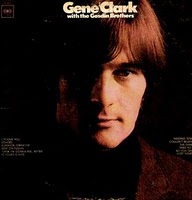 After leaving the Byrds, Clark should’ve been a huge success. But in a way I’m selfishly glad that he remains one of the best kept secrets in popular music, widely influential but entirely under the radar of popular recognition. While his Dylanesque White Light and his coked-out baroque country masterpiece, No Other, are generally the ones most often mentioned, this one, which to all intents and purposes is his solo debut (the Gosdin brothers playing an integral role but having little to do with the album’s composition), is a record of tremendous scope for its modest length, with flashes of country, bluegrass, baroque pop, psychedelia—and more than an occasional nod to the spare melodicism of Rubber Soul. It’s the kind of record only a singer and songwriter as talented as Clark could pull off without coming off as pretentious or boring or unfocused. This album is none of those things. It frequently beats the Byrds at their own game, so fans of that group’s ilk should get this posthaste. But I’d recommend this to anyone with an interest in the best stuff from the mid 60s. –Will
After leaving the Byrds, Clark should’ve been a huge success. But in a way I’m selfishly glad that he remains one of the best kept secrets in popular music, widely influential but entirely under the radar of popular recognition. While his Dylanesque White Light and his coked-out baroque country masterpiece, No Other, are generally the ones most often mentioned, this one, which to all intents and purposes is his solo debut (the Gosdin brothers playing an integral role but having little to do with the album’s composition), is a record of tremendous scope for its modest length, with flashes of country, bluegrass, baroque pop, psychedelia—and more than an occasional nod to the spare melodicism of Rubber Soul. It’s the kind of record only a singer and songwriter as talented as Clark could pull off without coming off as pretentious or boring or unfocused. This album is none of those things. It frequently beats the Byrds at their own game, so fans of that group’s ilk should get this posthaste. But I’d recommend this to anyone with an interest in the best stuff from the mid 60s. –Will
Eric Dolphy “Out There” (1960)
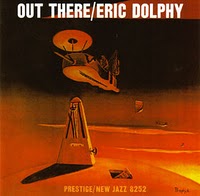 At first Out There sounds like an Ornette Coleman album, but then you realize that Eric Dolphy has twisted Coleman’s weird ideas around his even stranger finger. I mean…legendary bassist Ron Carter plays cello. Cello!!! George Duvivier plays bass. What a stroke of genius. There’s less musicians on Out There than on Dolphy masterpiece Out To Lunch. In fact, Dolphy is the only horn period. He puts in mind blowing solos on alto sax, flute, b-flat clarinet and bass clarinet. If I had to choose the most talented reed and woodwind player of all time it would be a tie between Eric Dolphy and Rahsaan Roland Kirk. While Kirk absolutely mastered more than 50 instruments, Dolphy can make a clarinet sound drop-dead sexy one moment and convince you that the world is ending the next. The same goes for any instrument that he played. “Sketch of Melba” has some stunning flute playing. –Rob
At first Out There sounds like an Ornette Coleman album, but then you realize that Eric Dolphy has twisted Coleman’s weird ideas around his even stranger finger. I mean…legendary bassist Ron Carter plays cello. Cello!!! George Duvivier plays bass. What a stroke of genius. There’s less musicians on Out There than on Dolphy masterpiece Out To Lunch. In fact, Dolphy is the only horn period. He puts in mind blowing solos on alto sax, flute, b-flat clarinet and bass clarinet. If I had to choose the most talented reed and woodwind player of all time it would be a tie between Eric Dolphy and Rahsaan Roland Kirk. While Kirk absolutely mastered more than 50 instruments, Dolphy can make a clarinet sound drop-dead sexy one moment and convince you that the world is ending the next. The same goes for any instrument that he played. “Sketch of Melba” has some stunning flute playing. –Rob
Rush “Hemispheres” (1978)
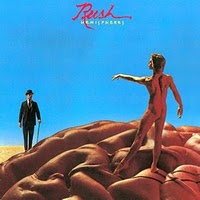 Hemispheres is the culmination of all that Rush had been striving for since Neil Peart ascended to the drum stool back on Fly By Night. The side-long title track is a winding conceptual piece that one-ups 2112 in it’s uniformity and metaphorical marriage of paperback fantasy with egghead philosophy. A continuation of A Farewell To Kings’ “Cygnus X-1” (on tour Rush would play both pieces together, forming one 30-minute monstrosity), “Hemispheres” tells a convoluted tale of the “battle of heart and mind” that dabbles in Greek mythology and Nietzsche-inspired psychology, set to an ever-unfolding barrage of head-spinning riffs. But it’s side two of Hemispheres that ensures it’s classic status, with the brief, but hard-hitting and lyrically direct “Circumstances,” ably leading things off. “The Trees,” an almost Brothers Grimm styled allegorical tale of the pitfalls of collectivism, quickly became a Rush standard, as did the multi-part instrumental “La Villa Strangiato.” Subtitled with a wink, “An Exercise in Self-Indulgence,” the showcase is a tour-de-force of prog-rock muscle that probably inspired half of the kids who heard it to hone their musical chops, while the other half headed straight for the record store’s newly-added punk bin. But in it’s own way, Hemispheres is as uncompromising a statement as any, and with it Rush carved a permanent niche as leaders of their own pencil-necked revolution. –Ben
Hemispheres is the culmination of all that Rush had been striving for since Neil Peart ascended to the drum stool back on Fly By Night. The side-long title track is a winding conceptual piece that one-ups 2112 in it’s uniformity and metaphorical marriage of paperback fantasy with egghead philosophy. A continuation of A Farewell To Kings’ “Cygnus X-1” (on tour Rush would play both pieces together, forming one 30-minute monstrosity), “Hemispheres” tells a convoluted tale of the “battle of heart and mind” that dabbles in Greek mythology and Nietzsche-inspired psychology, set to an ever-unfolding barrage of head-spinning riffs. But it’s side two of Hemispheres that ensures it’s classic status, with the brief, but hard-hitting and lyrically direct “Circumstances,” ably leading things off. “The Trees,” an almost Brothers Grimm styled allegorical tale of the pitfalls of collectivism, quickly became a Rush standard, as did the multi-part instrumental “La Villa Strangiato.” Subtitled with a wink, “An Exercise in Self-Indulgence,” the showcase is a tour-de-force of prog-rock muscle that probably inspired half of the kids who heard it to hone their musical chops, while the other half headed straight for the record store’s newly-added punk bin. But in it’s own way, Hemispheres is as uncompromising a statement as any, and with it Rush carved a permanent niche as leaders of their own pencil-necked revolution. –Ben
T. Rex “Zinc Alloy and the Hidden Riders of Tomorrow” (1974)
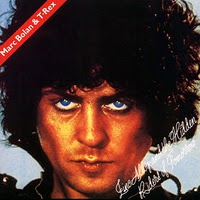 Conventional wisdom holds that Marc Bolan & T. Rex started to sink with Zinc Alloy and the Hidden Riders of Tomorrow (or was it Tanx?) into his bloated period of mid-seventies mediocrity, but as a Bolan apologist I still hold it in high regard. Certainly, Zinc Alloy is the strangest release yet from the glitter-rock fairy, an often uncomfortable and chaotic collection that radiates a nasty, coke-fueled jitter. Bolan’s idea of the new T-Rex sound was some sort of bubblegum-soul hybrid, and to that end he introduced future Mrs. Bolan, Gloria Jones, to the T-Rex fold, whose blood-curdling wail ironically possessed about as much soul as a set of fingernails being drawn across a chalkboard. Her voice, plus heavy doses of Bolan’s spazzy fuzz guitar, and strings and synthesizers, are some of the odd limbs comprising this stumbling, glam-funk Frankenstein. But Bolan could pull killer hooks out of his wizard’s hat no matter how deluded his vision had become in his quest to break the American market, witness the jumpy “Venus Loon,” jubilant “Interstellar Soul” and “Nameless Wilderness” or glam grind of “Liquid Gang.” Elsewhere, song fragments like “Galaxy” and “Spanish Midnight” house equally effective melodies, while the sweaty “Explosive Mouth” and grand “Carlisle Smith & the Old One” are other lost gems from this release. The relatively tame “Teenage Dream,” with it’s retro-50’s lean, would make for an odd single flop from the album. –Ben
Conventional wisdom holds that Marc Bolan & T. Rex started to sink with Zinc Alloy and the Hidden Riders of Tomorrow (or was it Tanx?) into his bloated period of mid-seventies mediocrity, but as a Bolan apologist I still hold it in high regard. Certainly, Zinc Alloy is the strangest release yet from the glitter-rock fairy, an often uncomfortable and chaotic collection that radiates a nasty, coke-fueled jitter. Bolan’s idea of the new T-Rex sound was some sort of bubblegum-soul hybrid, and to that end he introduced future Mrs. Bolan, Gloria Jones, to the T-Rex fold, whose blood-curdling wail ironically possessed about as much soul as a set of fingernails being drawn across a chalkboard. Her voice, plus heavy doses of Bolan’s spazzy fuzz guitar, and strings and synthesizers, are some of the odd limbs comprising this stumbling, glam-funk Frankenstein. But Bolan could pull killer hooks out of his wizard’s hat no matter how deluded his vision had become in his quest to break the American market, witness the jumpy “Venus Loon,” jubilant “Interstellar Soul” and “Nameless Wilderness” or glam grind of “Liquid Gang.” Elsewhere, song fragments like “Galaxy” and “Spanish Midnight” house equally effective melodies, while the sweaty “Explosive Mouth” and grand “Carlisle Smith & the Old One” are other lost gems from this release. The relatively tame “Teenage Dream,” with it’s retro-50’s lean, would make for an odd single flop from the album. –Ben
Captain Beefheart “Shiny Beast (Bat Chain Puller)” (1978)
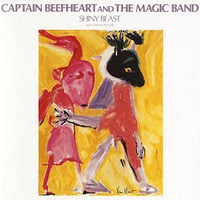 Captain Beefheart has always been sort of an enigma for me, an artist who I greatly respect and enjoy, but never quite fully understand where he is coming from. I finally got to the point where I put aside all my questioning and decided to just take in all the wacky bizarre features he incorporates. This notion proved to be the best way to listen to the Captain. Let’s face it – he’s weird, but he experiment’s with so many different things that you have to give him credit for being one of the most daring artists out there. I’ve come to be a big fan of all his music, but I still don’t know how to describe it. It’s similar to Frank Zappa, well, maybe not because I really can’t stand Frank’s music. I guess you could say it’s a cross between a free jazz freak out and an art-rock experiment. Whatever it is, it’s very interesting. And Shiny Beast is by far the most exciting album I have found of his. Every song is completely different from the next and it’s one of those rare albums where it never seems to get dull. If you are even remotely curious about the music of Captain Beefheart I would say begin here or with Trout Mask Replica; both are exceptional releases guaranteed to not disappoint. –Jason
Captain Beefheart has always been sort of an enigma for me, an artist who I greatly respect and enjoy, but never quite fully understand where he is coming from. I finally got to the point where I put aside all my questioning and decided to just take in all the wacky bizarre features he incorporates. This notion proved to be the best way to listen to the Captain. Let’s face it – he’s weird, but he experiment’s with so many different things that you have to give him credit for being one of the most daring artists out there. I’ve come to be a big fan of all his music, but I still don’t know how to describe it. It’s similar to Frank Zappa, well, maybe not because I really can’t stand Frank’s music. I guess you could say it’s a cross between a free jazz freak out and an art-rock experiment. Whatever it is, it’s very interesting. And Shiny Beast is by far the most exciting album I have found of his. Every song is completely different from the next and it’s one of those rare albums where it never seems to get dull. If you are even remotely curious about the music of Captain Beefheart I would say begin here or with Trout Mask Replica; both are exceptional releases guaranteed to not disappoint. –Jason
Soundtrack “Performance” (1970)
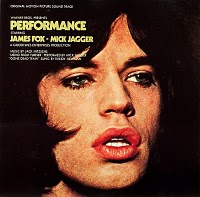 Even if you haven’t seen the film — and heck, if you haven’t, why not? — this is a remarkably satisfying soundtrack album, put together by Jack Nitzsche and featuring Ry Cooder on guitar. (In places this sounds extremely close to Cooder’s own scores, such as for Paris, Texas.) Randy Newman sings “Gone Dead Train” in a much more urgent style than anything on his own early albums, while Mick Jagger’s version of “Memo from Turner” — with Cooder on guitar and members of Traffic — is a gloriously sleazy blues that should be in any Stones fan’s collection. (If you’ve only heard the Stones’ own fumbled version on Metamorphosis — according to legend, deliberately sabotaged by Keith as revenge for Mick screwing Anita Pallenberg on set — you really haven’t heard the song at all.) And how can you pass up a soundtrack that has the good sense to include the Last Poets’ “Wake Up Niggers”? (The first “rap” I’d ever heard.) –Brad
Even if you haven’t seen the film — and heck, if you haven’t, why not? — this is a remarkably satisfying soundtrack album, put together by Jack Nitzsche and featuring Ry Cooder on guitar. (In places this sounds extremely close to Cooder’s own scores, such as for Paris, Texas.) Randy Newman sings “Gone Dead Train” in a much more urgent style than anything on his own early albums, while Mick Jagger’s version of “Memo from Turner” — with Cooder on guitar and members of Traffic — is a gloriously sleazy blues that should be in any Stones fan’s collection. (If you’ve only heard the Stones’ own fumbled version on Metamorphosis — according to legend, deliberately sabotaged by Keith as revenge for Mick screwing Anita Pallenberg on set — you really haven’t heard the song at all.) And how can you pass up a soundtrack that has the good sense to include the Last Poets’ “Wake Up Niggers”? (The first “rap” I’d ever heard.) –Brad
X-Ray Spex “Germfree Adolescents” (1978)
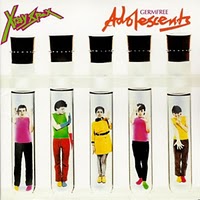 This is still one of most amazing, alluring and simply surreal records to emerge from punk rock — or simply rock. It’s a total one-off, and it hasn’t dated a bit. Where the hell did it come from? You can trace the lineage of the Clash or the Pistols back to their roots; Poly Styrene simply seems to have emerged completely formed, as if what she took from punk wasn’t a formula but a license to truly be herself. She is a wonderful lyricist, both critiquing and celebrating modern consumerism; for Poly, there’s something both fascinatingly alluring and horrifying in the plastic throwaway society. Really, the closest you’ll come to this record are J.G. Ballard’s 1970s novels such as Crash and The Unlimited Dream Company. The title track — about an obsessive-compulsive (as a result of rape?) — is one of the most haunting love songs you’ll ever hear. All this plus Styrene’s banshee wail and Rudi’s wild sax. So wonderfully alien — next to it, Bjork’s eccentricities looks like a tryhard wannabe. No wonder the band split after this; what was there left to say? –Brad
This is still one of most amazing, alluring and simply surreal records to emerge from punk rock — or simply rock. It’s a total one-off, and it hasn’t dated a bit. Where the hell did it come from? You can trace the lineage of the Clash or the Pistols back to their roots; Poly Styrene simply seems to have emerged completely formed, as if what she took from punk wasn’t a formula but a license to truly be herself. She is a wonderful lyricist, both critiquing and celebrating modern consumerism; for Poly, there’s something both fascinatingly alluring and horrifying in the plastic throwaway society. Really, the closest you’ll come to this record are J.G. Ballard’s 1970s novels such as Crash and The Unlimited Dream Company. The title track — about an obsessive-compulsive (as a result of rape?) — is one of the most haunting love songs you’ll ever hear. All this plus Styrene’s banshee wail and Rudi’s wild sax. So wonderfully alien — next to it, Bjork’s eccentricities looks like a tryhard wannabe. No wonder the band split after this; what was there left to say? –Brad
Humble Pie “Rock On” (1971)
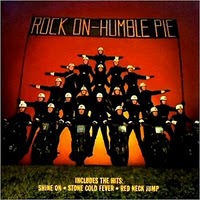 “Rock On” is Classic Rock with a Capitol C! It’s also The Pie’s very best record (in my Humble opinion). On this album a soulful Steve Marriott (of Small Faces) and guitar God Peter Frampton seamlessly blend all that was good about the seventies into one big sweaty orgy: hard rock, blues, country, gospel and R&B, all rolled up in glitter. Fans of Exile-era Stones, The Faces and Led Zeppelin will find something to love here. Throw this one on and watch the smiles on people’s faces as they groove to “Shine On,” “Sour Grain” and “Stone Cold Fever,” just three of many great tracks here. Criminally forgotten; shine some light back on “Rock On!” –David
“Rock On” is Classic Rock with a Capitol C! It’s also The Pie’s very best record (in my Humble opinion). On this album a soulful Steve Marriott (of Small Faces) and guitar God Peter Frampton seamlessly blend all that was good about the seventies into one big sweaty orgy: hard rock, blues, country, gospel and R&B, all rolled up in glitter. Fans of Exile-era Stones, The Faces and Led Zeppelin will find something to love here. Throw this one on and watch the smiles on people’s faces as they groove to “Shine On,” “Sour Grain” and “Stone Cold Fever,” just three of many great tracks here. Criminally forgotten; shine some light back on “Rock On!” –David


